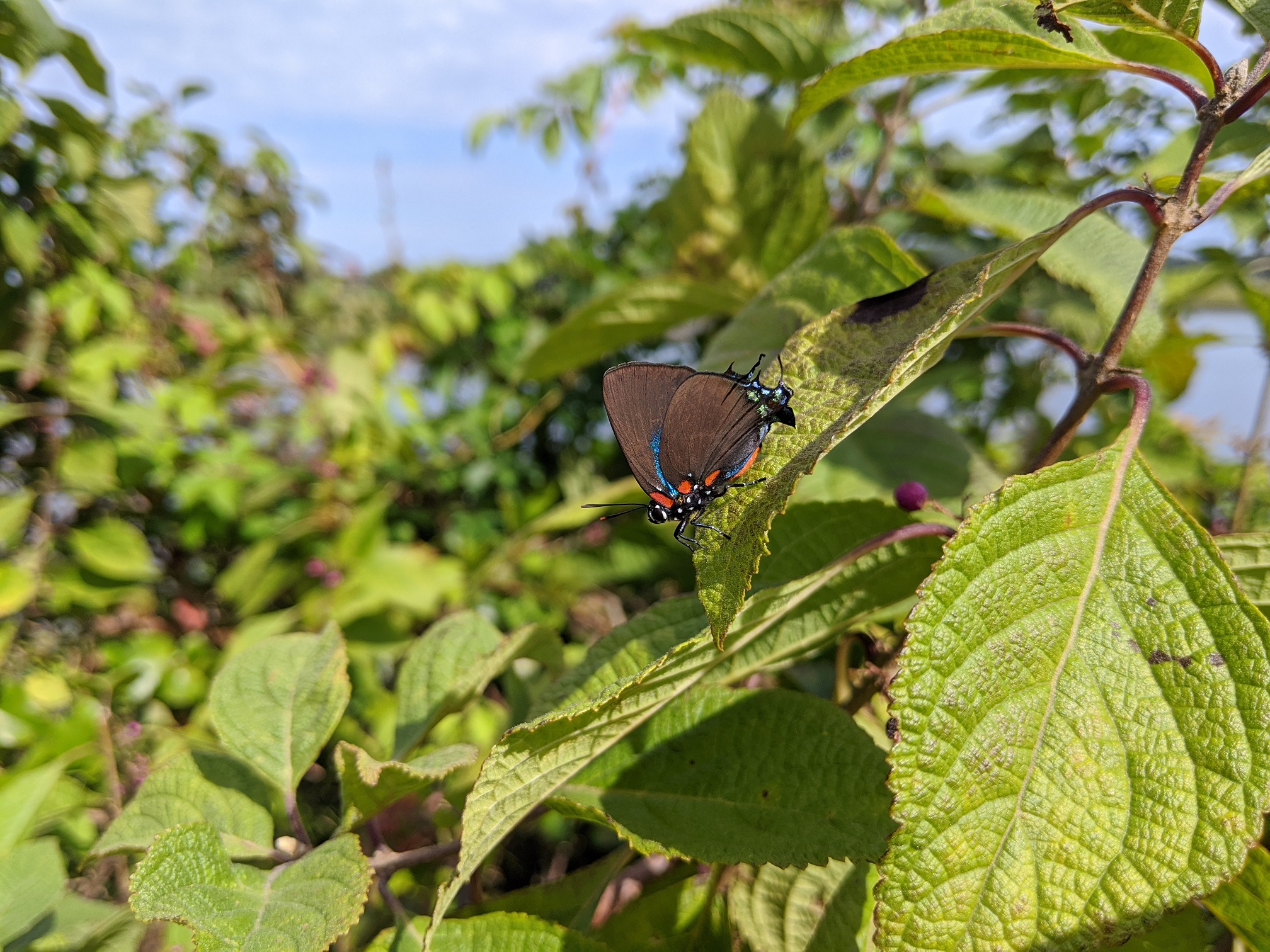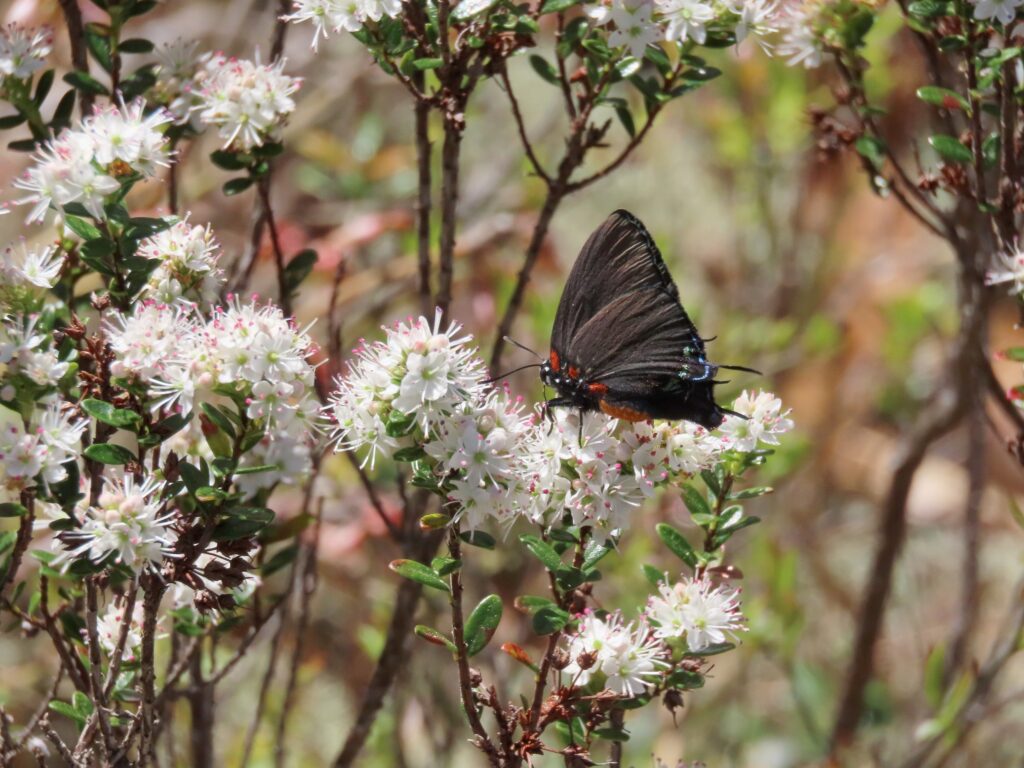




Our biggest, boldest, and most “beautimous” Gossamer-Wing butterfly, the Great Purple Hairstreak (Atlides halesus).
The Great Purple Hairstreak is an interesting member of the Hairstreak subfamily, Theclinae, and a butterfly that’s just as stunning to look at as it is scarce to see. Despite the name, Great Purple Hairstreaks are not purple, at least not in a clearly obvious way. The wing undersides for both sexes are a vaguely iridescent coal-black with burnt-orange to crimson spots at the wing bases. Their head and thorax are a deep black with scattered white spots. The abdomen is a rich orange below and a brilliant metallic sky-blue above. Both sexes boast brilliant blue colorations on both upper wing surfaces but the male has more extensive coloration of a generally darker, more sapphire-blue sheen. Males also sport a central blue patch, towards the body on the underside of the forewing, which often peaks out above the hindwing when perched. The hindwings of both sexes are tailed and studded with insets of topaz and turquoise. Some females have an additional flourish near the tails in the form of an extra burst of orange. The Great Purple Hairstreak is an unmistakable butterfly, not just because of the brilliant, one-of-a-kind coloration, but also because they’re the largest Hairstreak in North America.
Despite the bright, contrasting colors and considerable heft for a Hairstreak, this species is not often seen. The Great Purple Hairstreak is not so much rare as it is hard to find. Part of that is due to their host plant, Oak Mistletoe (Phoradendron leucarpum). Oak Mistletoe is a parasitic shrub that grows in the canopies of oak trees by tapping into the tree’s vasculature to siphon off water and nutrients. If you look up into the crown of an oak tree in winter and see a big green ball of foliage in the middle of the tree, that’s Mistletoe. Given this fact, Great Purple Hairstreaks spend much of their lives in the treetops, both while caterpillars and pupae and again as adults when searching for mates or laying eggs. So it’s harder to chance upon one than other butterflies. The first brood’s flight time peaks around the end of March and a second flush flies from late July into October. They’re most common along the edges of moist hardwood forests and usually encountered nectaring in edge habitat and gardens. They’re not a skittish butterfly by any means and, when they descend from on high to mingle among us, they’ll often let you get good up close looks at them.